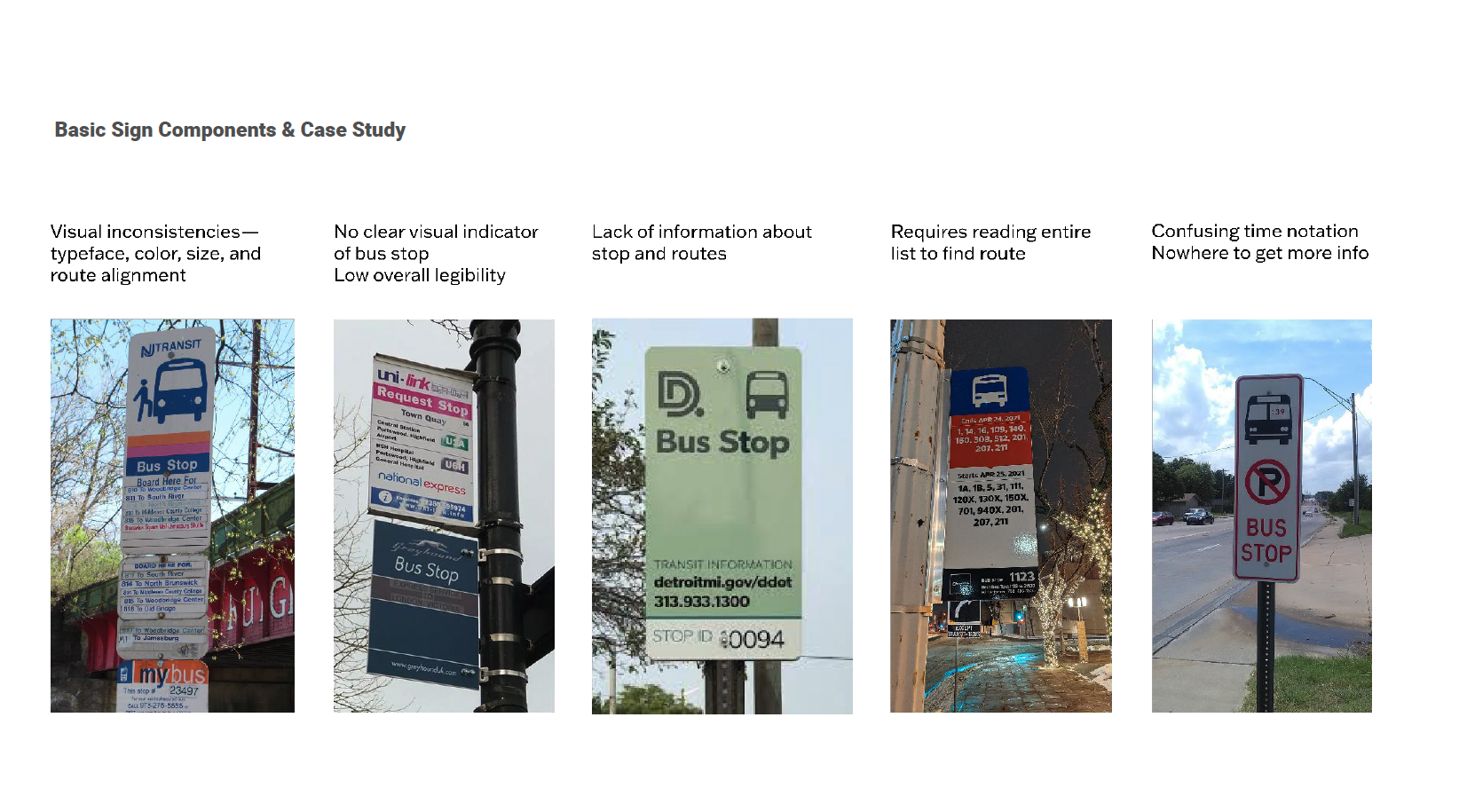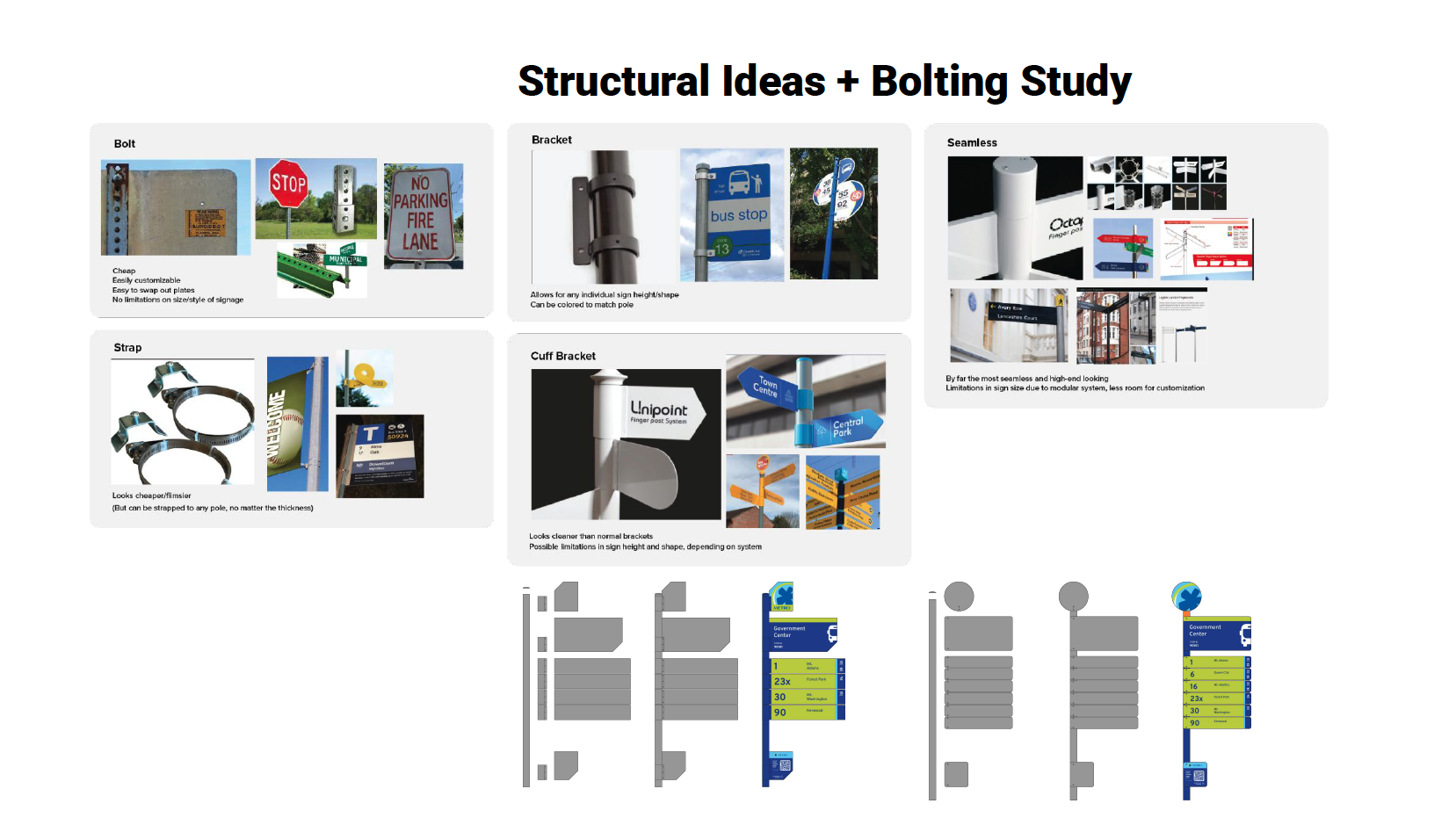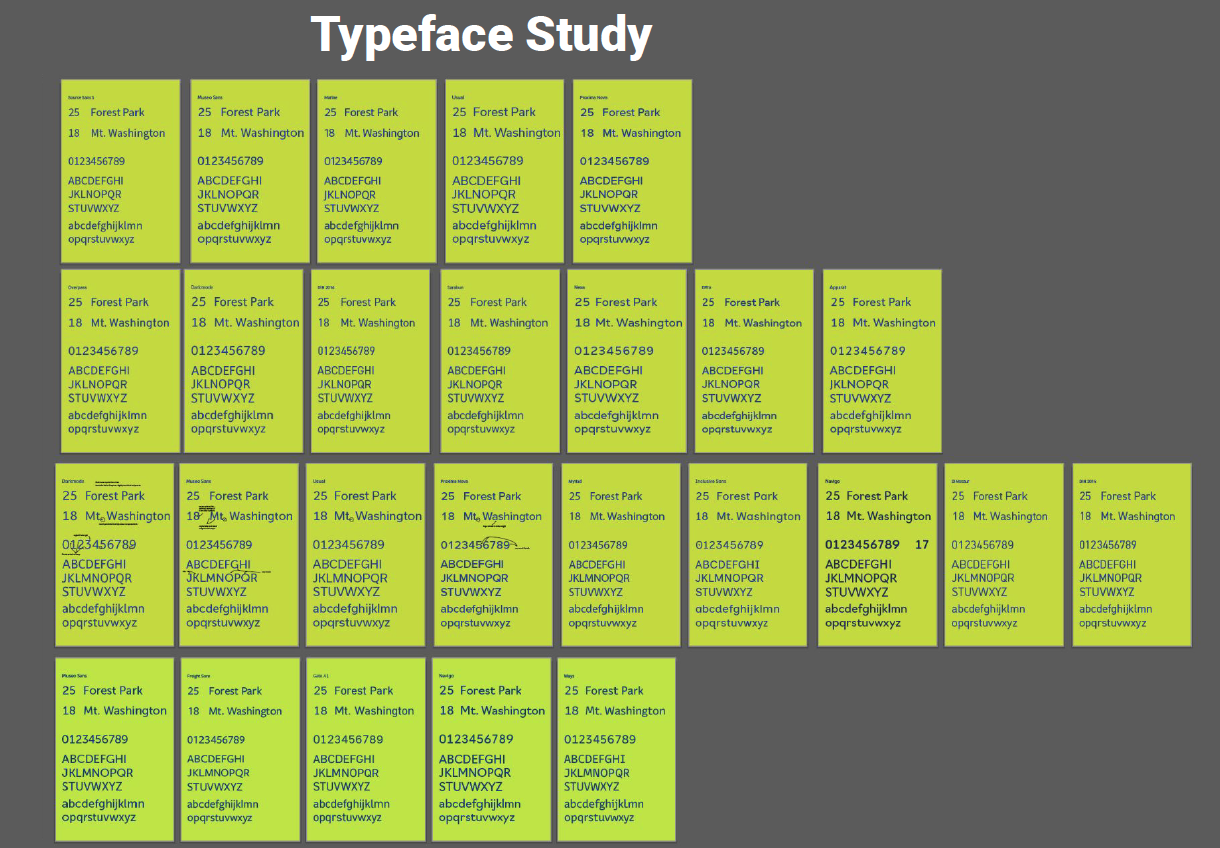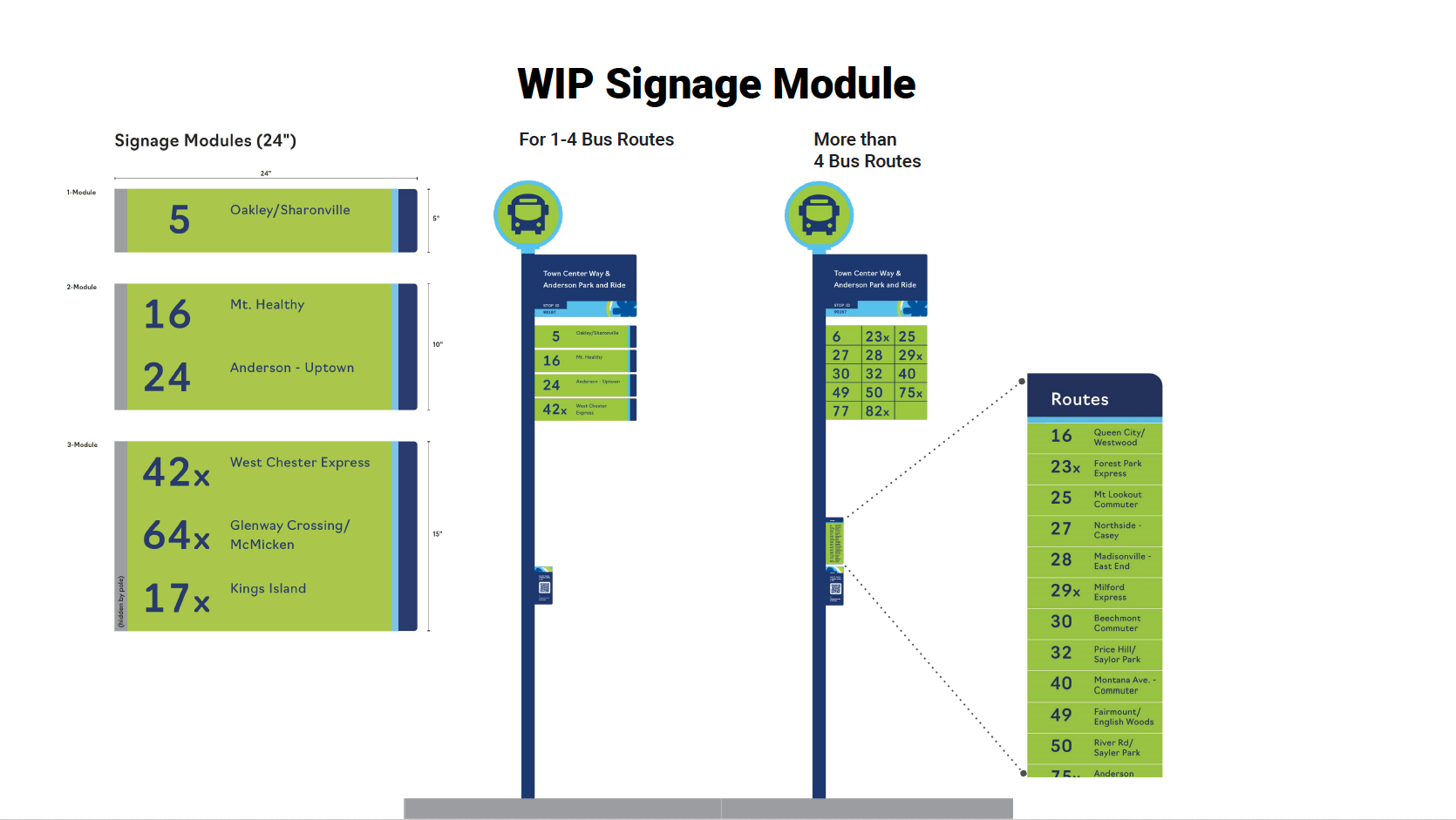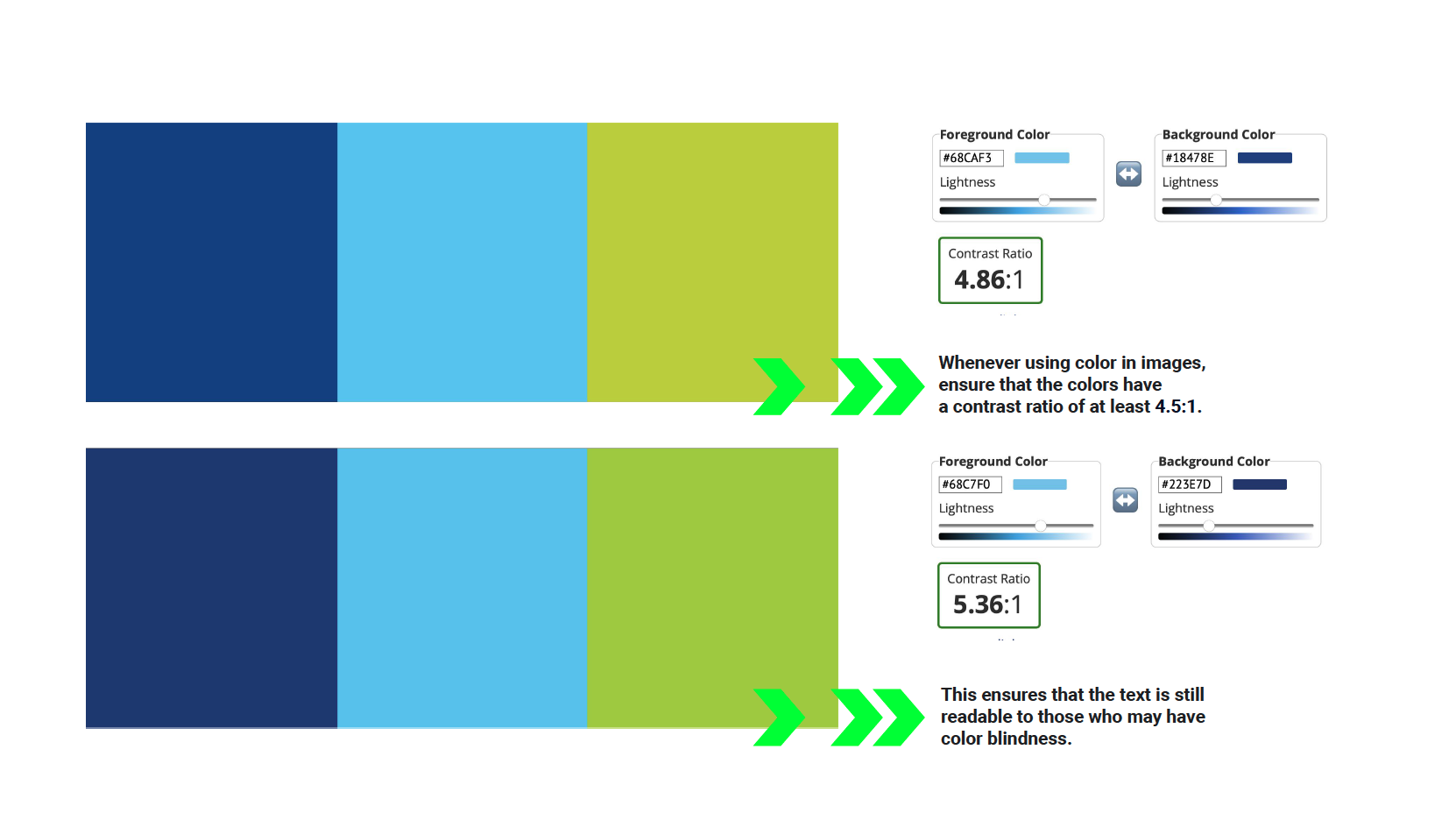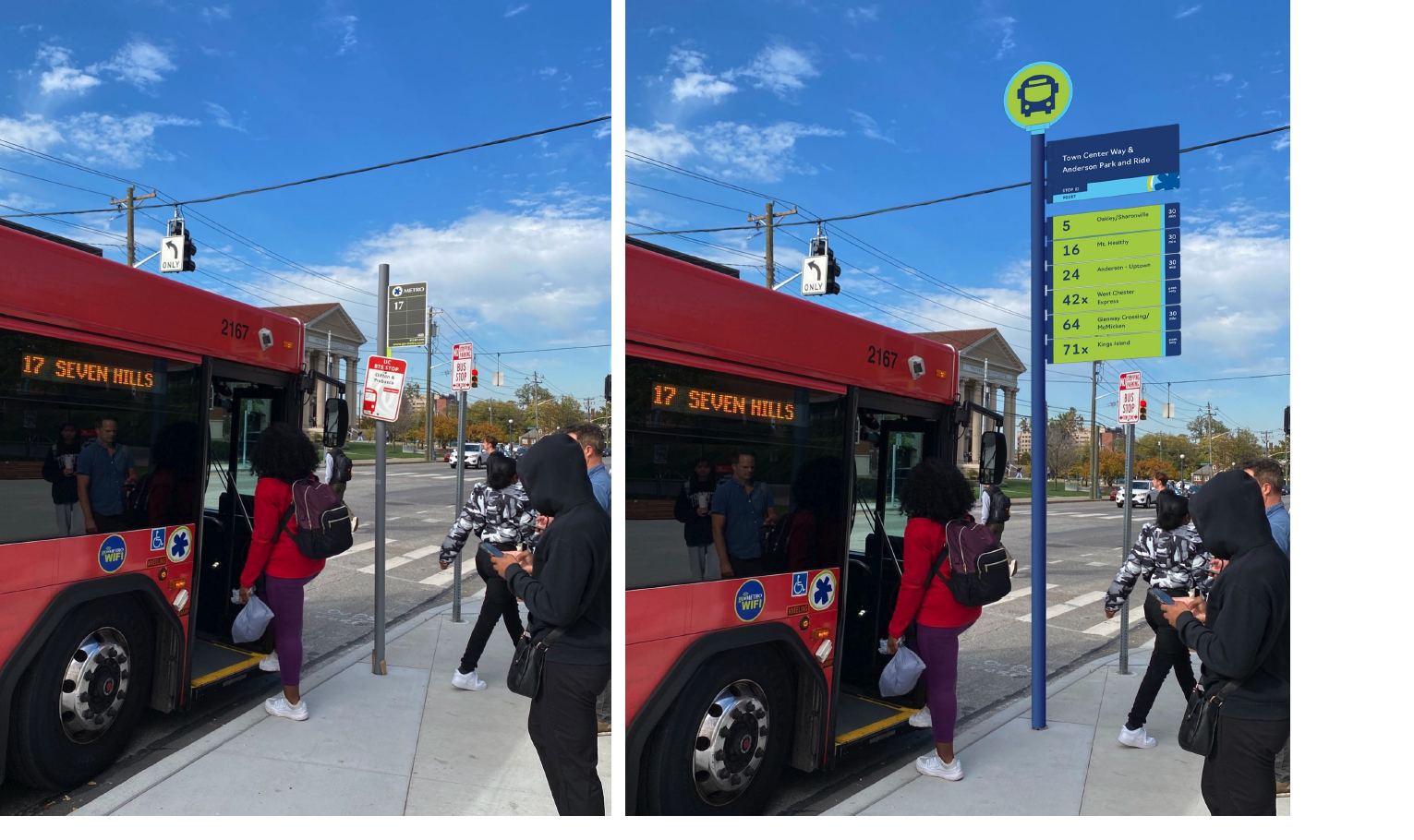Collaboration with Southwest Ohio Regional Transit Authority (SORTA)
Go Metro
City-wide Bus Stop Signage Systems
The University of Cincinnati College of Design, Architecture, Art, and Planning(DAAP) has an exciting intergovernmental agreement with Southwest Ohio Regional Transit Authority(SORTA) to provide a range of design, research and urban planning services over the next three years (2023-2025). By implementing the ‘research through design’ method, we are focusing on the intersection of accessible design, visual hierarchy
of complex information, and technology to craft signage solutions that simplify communication in the urban environments, enhance user experiences while commuting, and foster a sense of community.
It was thrilling to get the opportunity to work with SORTA
and contribute to the city.
External Collaborators:
SORTA; Go Metro;
︎︎︎
Transforming bus signage design into an integral part of the urban systems design involves considering various aspects of the urban environment, transportation network, and userexperience. Understanding the Urban Context is important. By understanding the broader urban context where the bus signage will be implemented, we wanted to ensure that bus signage is seamlessly integrated into the overall transportation network. We ensured User-Centered design—a signage with a focus on user needs—prioritize legibility and visibility of signage, especially from a distance and in various lighting conditions. Use typefaces with better hierarchy, typographic attributes for public display, appropriate color contrast, and suitable materials. We tried to establish a clear wayfinding system that guides passengers by reducing redundancies. Using signage hierarchy our design is trying to convey the important information first. We needed to considere providing information in multiple size and formats (e.g., text, symbols, and graphics) to cater to a familiar brand attributes. Lastly, we wanted to design the bus-stop signage that contributes to the contemporary yet a cohesive visual identity of a urban city like Cincinnati. We will gather feedback from commuters, transportation authorities, and other stakeholders to identify more opportunties of design and iteratively refine the signage system based on this feedback
